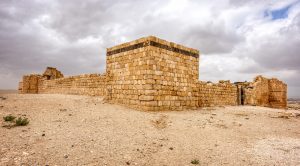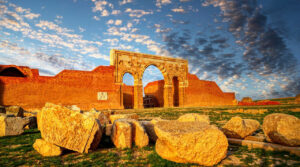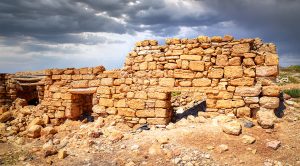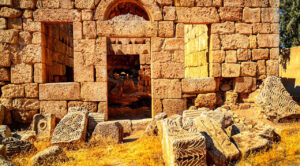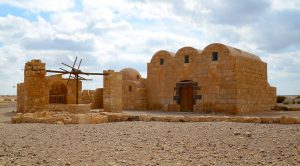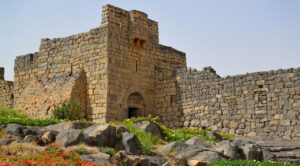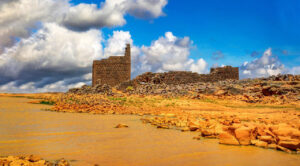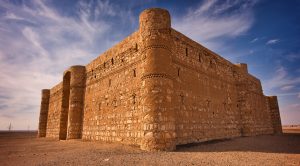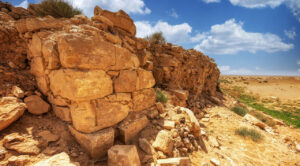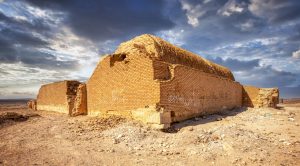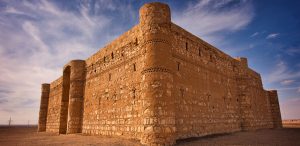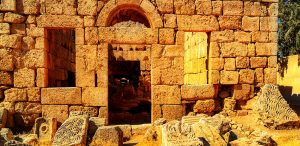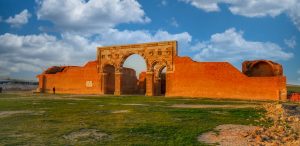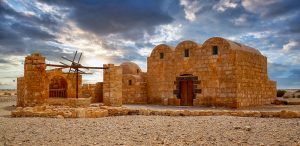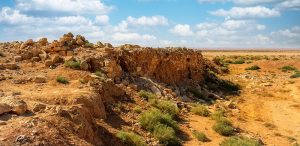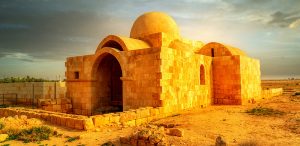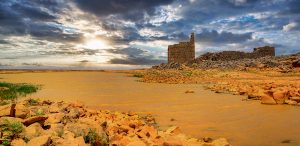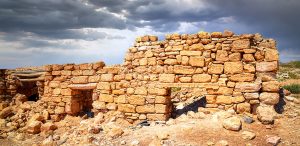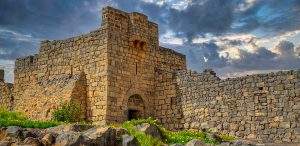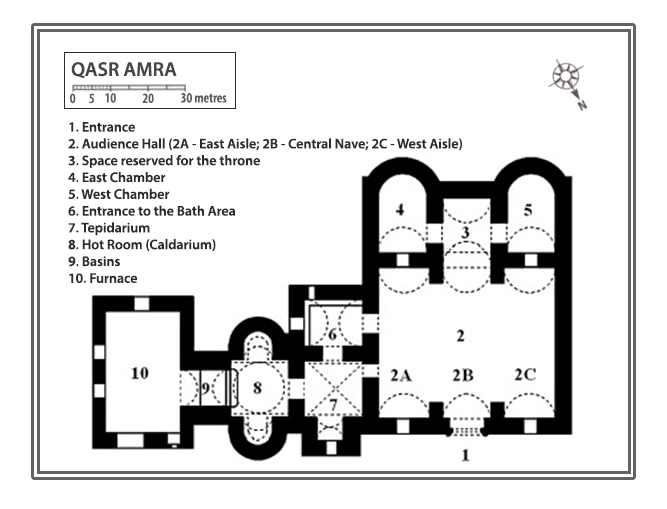Go back in time to an era of military campaigns and desert trade routes as you explore Jordan’s awe-inspiring Desert Castles, many of which date back to the early 8th century. These magnificent structures, adorned with intricate mosaics, frescoes, and stucco carvings, boast artistic influences from Persian and Graeco-Roman traditions, offering a captivating glimpse into life during the eighth century. Known as castles for their imposing stature, these desert complexes served diverse purposes, including caravan stops, agricultural and trade hubs, royal resort pavilions, and outposts that strengthened connections between distant rulers and local Bedouin tribes.
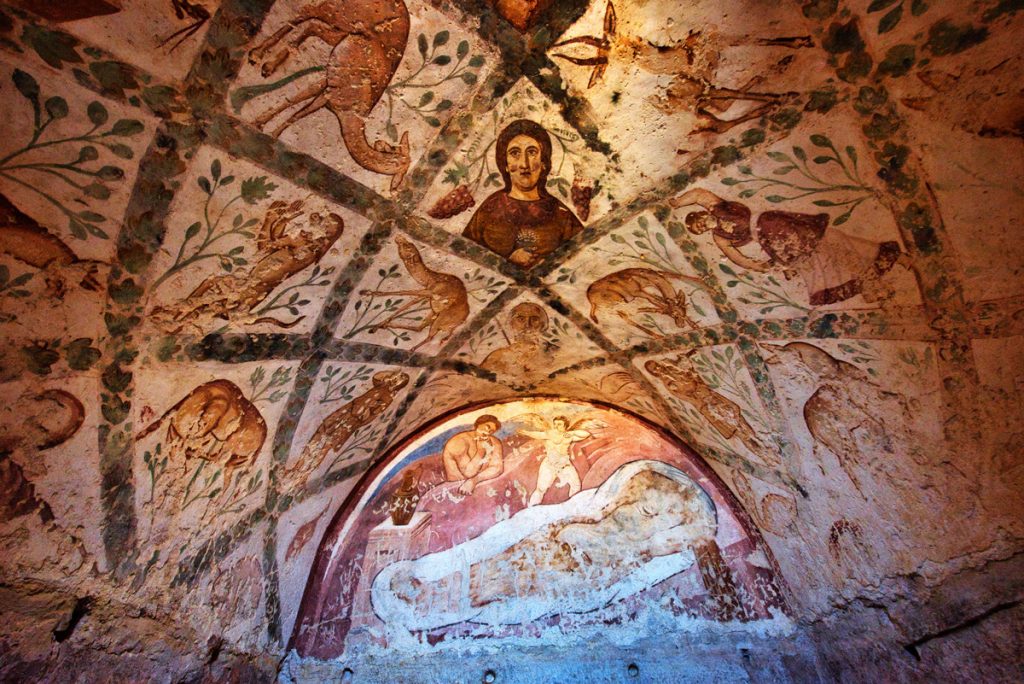
One of the most remarkable sites is Qasr Amra, located 75km east of Amman along Highway 40. A UNESCO World Heritage Site, this well-preserved monument boasts vibrant frescoes that grace its interior walls and ceilings, as well as colourful mosaics paving two of its rooms. The frescoes are particularly famous for their vivid depictions of various scenes, including hunting, bathing, and even a zodiac. These artworks provide a fascinating glimpse into the artistic and cultural influences of the time, showcasing a blend of Byzantine, Persian, and local styles. The frescoes are celebrated for their historical significance and artistic beauty, making Qasr Amra a remarkable site for both historians and art enthusiasts.
The Audience Hall
At the heart of Qasr Amra lies the audience hall, an impressive rectangular space designed to host visitors and ceremonial gatherings. The south side of the hall features a throne alcove, symbolising the authority of the rulers who once resided here. The walls are adorned with frescoes that narrate themes of leisure and valour, while a shallow pool or fountain, fed by an intricate hydraulic system, adds an air of grandeur to the environment. This tranquil feature likely served as a focal point for gatherings, enhancing the harmonious blend of art and architecture.
The Bath Complex
The bath complex in Qasr Amra is a marvel of engineering, reflecting a sophisticated understanding of wellness and leisure.
The complex consists of three main rooms, designed with the Roman bathing tradition in mind:
- Frigidarium (cold room) – A space for cooling off after a warm bath.
- Tepidarium (warm room) – A transitional area where bathers could acclimate to different temperatures.
- Caldarium (hot room) – Equipped with heating mechanisms to provide restorative warmth.
These rooms were not only a space for relaxation but also for the revival of the “three vital principles in the body” – animal, spiritual, and natural – as advised by contemporary Arab physicians. To complement this, the walls (except in the caldarium) were decorated with frescoes depicting hunting scenes and other invigorating activities, believed to energise and uplift the spirits of bathers.
The Hydraulic System
Qasr Amra’s engineering brilliance extends to its hydraulic system, which ensured an effective water supply and distribution across the complex. A masonry-lined deep well was connected to an elevated water tank, from which two feeder pipes channelled water to various features. This system supplied the fountain in the audience hall and the facilities in the baths, including a plastered tank above the furnace to provide heated water. The system showcases ingenuity in balancing functionality with opulence in a desert setting.
Recent Discoveries
Recent excavations by the Spanish Archaeological Mission have shed further light on the historical significance of Qasr Amra. These efforts uncovered the foundations of a smaller courtyard castle nearby, suggesting that this site was part of a larger network of buildings, further underscoring its importance in the region.
The Desert Castles, with Qasr Amra as a shining example, continue to stand as testaments to architectural ingenuity, artistic excellence, and the cultural exchange of the 8th century. Each visit is an invitation to immerse yourself in the stories and legacies these structures carry, offering a connection to a bygone era that lives on through their enduring splendour.
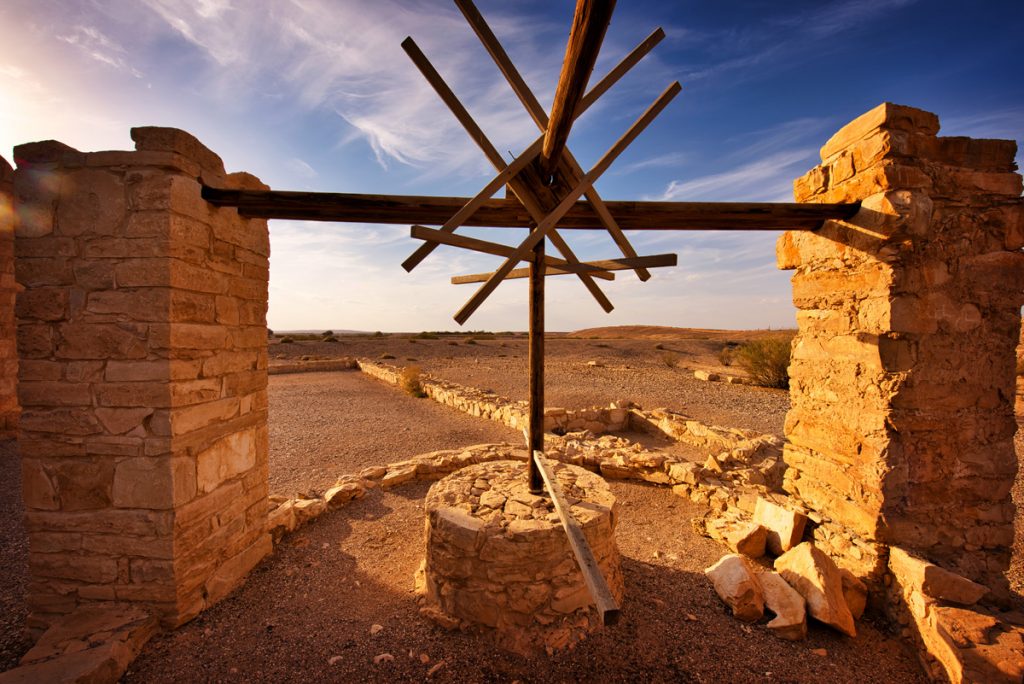
One of the six kings depicted in the frescoes of Qasr Amra is King Roderick of Spain, whose brief reign around the year 710 not only dates the image but potentially the construction of the building itself. Such associations reflect the deep intertwining of politics and culture during the Umayyad period.
Qasr Amra, thought to have served as a desert retreat, stands as a testament to the opulence and artistic innovation of its era. For years, archaeologists widely attributed its construction to the ruling caliph Walid I. However, recent studies suggest it was more likely commissioned by one of two Umayyad princes who later ascended to the caliphate—Walid II or Yazid III.
Both princes were known for their extended absences from Damascus, the heart of the Umayyad empire, and for their immersion in activities of leisure and refinement. Walid II, in particular, was famous for his indulgence in poetry readings, musical performances, and luxurious entertainment—pastimes vividly depicted in the frescoes. Historical accounts also speak of one extraordinary event where performers dressed as celestial constellations entertained him, a possible allusion to the striking astronomical motifs adorning the caldarium ceiling.
On the other hand, Yazid III, whose mother was a Persian princess, brought a unique cultural perspective influenced by Persian traditions and artistic sensibilities. His appreciation for pleasure-seeking and cultural patronage lends further weight to his candidacy as the man behind Qasr Amra’s construction.
Abandoned and lost to history for centuries, Qasr Amra was rediscovered in 1898 by Czech explorer Alois Musil. The vivid frescoes within, capturing scenes ranging from royal luxuries to hunting expeditions, were immortalised through the detailed drawings of Austrian artist Alphons Leopold Mielich, created for Musil’s seminal documentation of the site. These artworks played a crucial role in highlighting the historical significance of the structure.
By the late 1970s, a Spanish team undertook the restoration of the frescoes, breathing new life into the fading artistry. To solidify its importance, Qusayr Amra was designated a UNESCO World Heritage Site in 1985, ensuring its preservation as a symbol of Umayyad ingenuity and culture.
Today, Qasr Amra speaks to the splendour of an era where art, astronomy, and leisure intersected, inviting visitors to step back in time and immerse themselves in its enchanting narrative.


